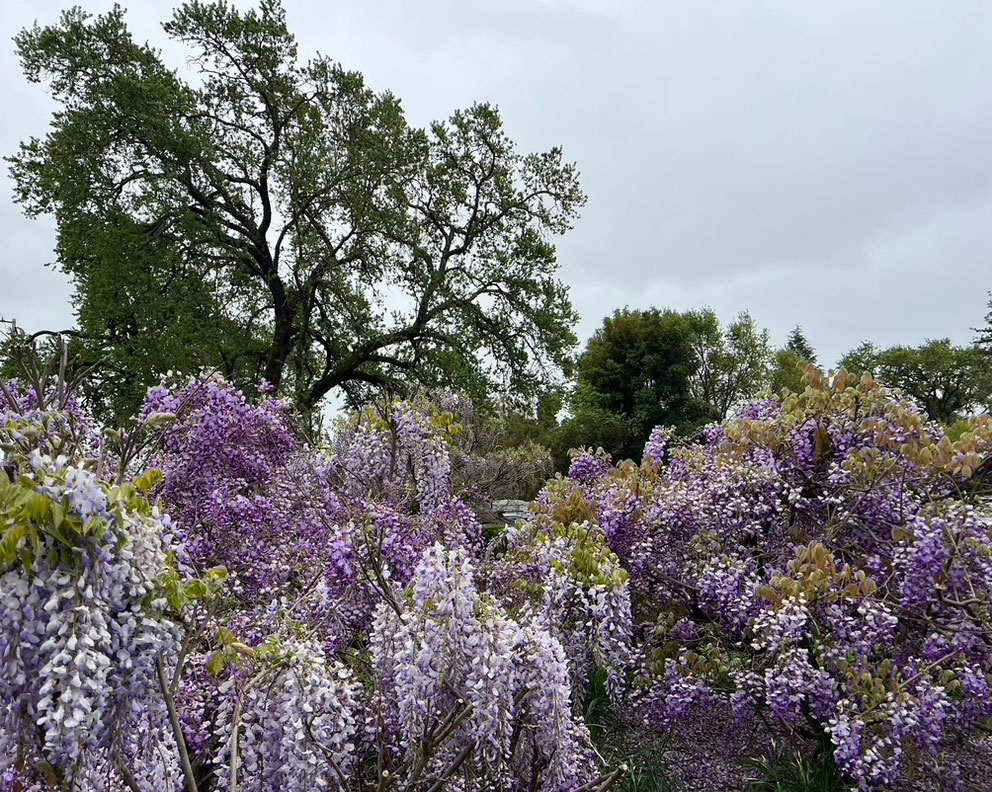by Pierre Ratte
Fragrant blooms. Fabulous colors. Wisteria signals spring and often brings fond memories. Arbors, pergolas, front porches and garden fences are all candidates for this plant’s twining grip. Perhaps wisteria evokes memories of spring love? Perhaps its fragrant blooms evoke nostalgic memories. Perhaps its magnificent flowering allows us to feel winter transitioning to spring.
Wisteria is associated with romance and spring, and it turns out spring love is more than a romantic idea. Longer days and increased warmth boosts phytochemicals in plants and hormones in animals. Plants transition from vegetative to reproductive growth (blooms and flowers) when Flowering Locus T (FT) is released. It’s a gene that releases a mobile protein that travels the length of the plant to signal production of flowers, the reproductive organs of plants. In animals, hormones like melatonin, serotonin and dopamine increase during spring.
So those who have romantic feelings in spring—spring fever, as they say—are not alone.

Fun facts: Japanese wisteria twists clockwise. Chinese wisteria twists counterclockwise. There are four species of wisteria: Japanese (floribunda), Chinese (sinensis), American (frutescens) and silky (brachybotrys). The world’s largest wisteria, planted in 1894, covers one acre in Sierra Madre, California, and weighs an estimated 250 tons. Wisteria blooms are purple, lavender, pink or white.
Blooms and flowers are, generally speaking, the same; however “flower” is also a scientific term specifically referring to the reproductive structure of plants. A flower’s structure includes: sepals, collectively calyx—the protective leafy covering of emerging buds; petals, collectively corolla—showy, often colorful blooms attracting pollinators; stamens, collectively androcium—the male reproductive organs consisting of filaments and anters, stalks and pollen sacs, respectively; pistils or carpels, collectively gynoecium—the female reproductive organs consisting of stigmas, stiles and ovules.
The word flower describes a single flower or a collection of small flowers, the latter known as an inflorescence. Wisteria’s flower clusters are a specific type of inflorescence, called a raceme. Wisteria racemes can extend three feet and each bloom is a separate flower. On racemes, blooms are connected to the central stem by pedicles—short, delicate stems. Panicles, on the other hand, are clusters of flowers where each flower emerges from a central stem without a pedicle. Examples are lilacs and hydrangea. Snapdragons, mustard, foxglove, wisteria and lilies-of-the-valley, however, are common racemes.









